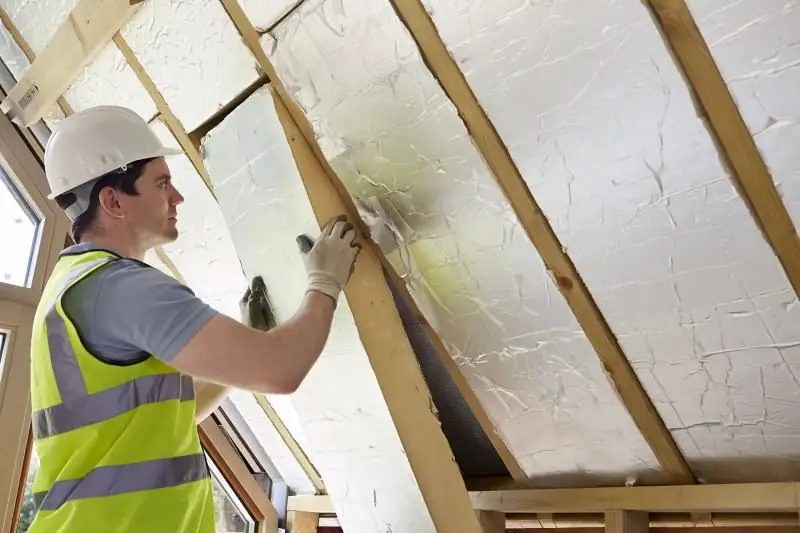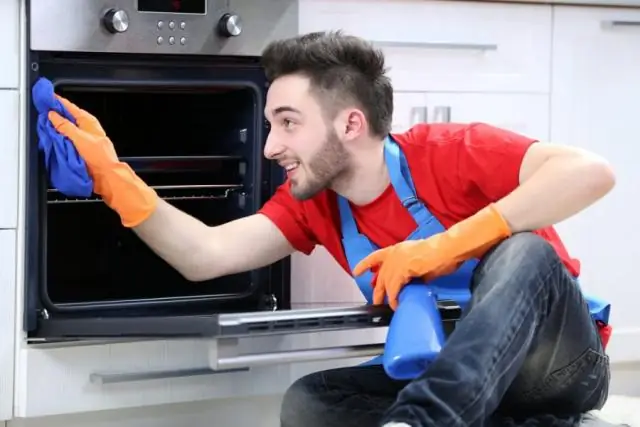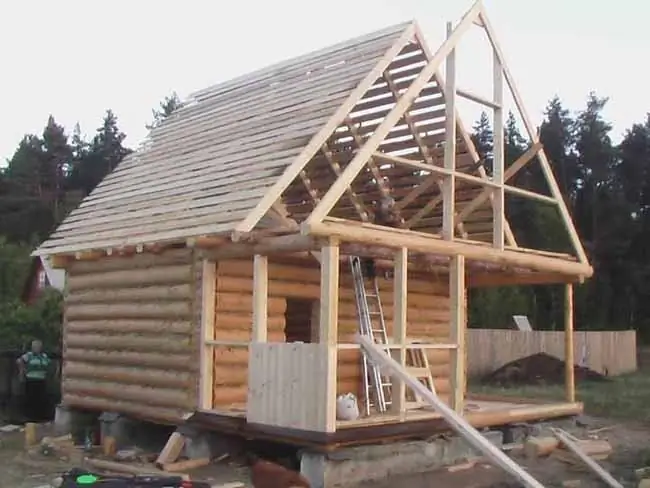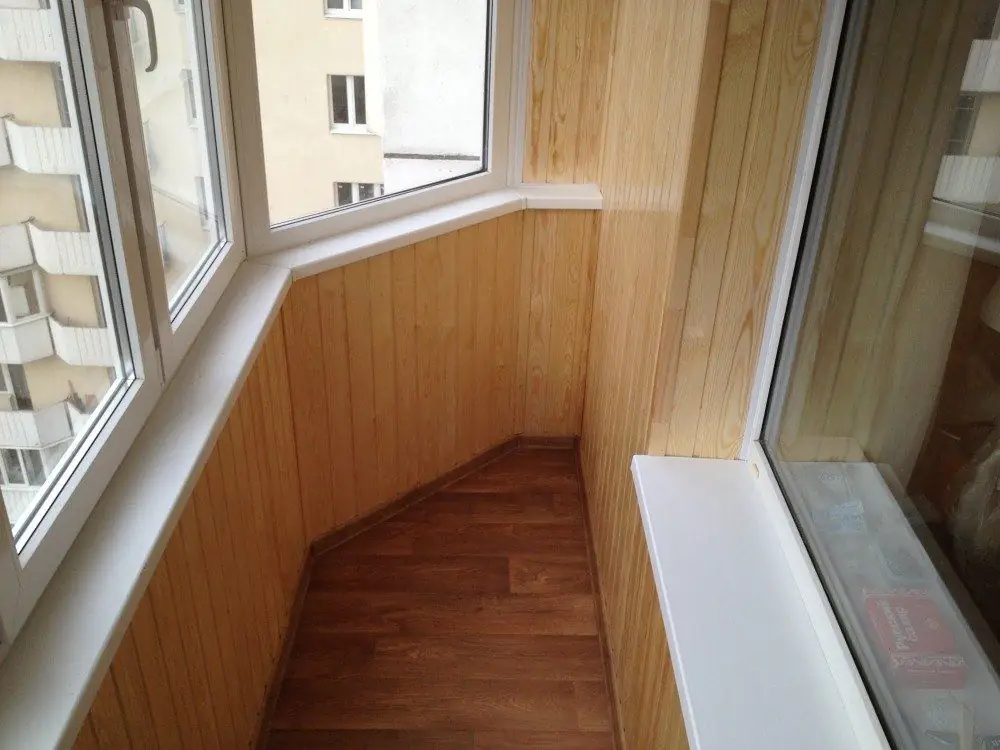
Table of contents:
- Author Bailey Albertson [email protected].
- Public 2024-01-17 22:26.
- Last modified 2025-06-01 07:32.
How to insulate the roof with foam with your own hands

Roof insulation can serve as a guarantee of a comfortable stay in a country house. But this is possible only if it is produced in accordance with all the rules, in accordance with the requirements for the selected material. One of the best is foam insulation, which has gained well-deserved popularity due to its many undeniable advantages.
Content
-
1 Roof insulation with foam: basic features
- 1.1 Photo gallery: roof insulation with foam
- 1.2 Overview of Styrofoam Specifications
-
1.3 Styrofoam grades and their scope
- 1.3.1 Table: the use of different grades of foam
- 1.3.2 Photo gallery: Styrofoam - brands and release forms
- 1.3.3 Video: how to choose foam
-
2 Installation of roof insulation
-
2.1 Installation of insulation boards
- 2.1.1 Video: roof insulation with foam
- 2.1.2 Photo Gallery: How to Cut Styrofoam
-
- 3 Service life of foam insulation
- 4 Customer Reviews
Roof insulation with foam: basic features
This, far from being a new material for insulating walls and roofs of buildings, has recently become very popular due to its high insulating properties and ease of use. Styrofoam can be used for both external and internal work. It is actively used in industrial construction and for the construction of buildings in the private sector.

Polyfoam is one of the most popular types of insulation in individual construction
Photo gallery: roof insulation with foam
-

Diagram of the formation of a roofing cake with foam insulation - Insulation is protected from moisture using layers of steam and waterproofing
-

Roof insulation with foam - The foam is tightly laid in the gaps between the rafters
-

Installation of insulation outside - Insulation can be located both inside and outside the roof frame
-

Installation of roofing cake vapor barrier -
A vapor barrier layer protects the insulation from moisture that can condense from vapors escaping from residential premises
Overview of Styrofoam Specifications
The combination of useful properties of foam determines its popularity in construction. The main advantages of the material are:
- Thermal conductivity. The extremely low thermal conductivity of the foam is due to a structure that is characteristic only of this material. It consists of individual air bubbles measuring 0.25-0.6 millimeters. The balls are formed by a thin layer of polyethylene with air inside. It is the closeness of each cell that determines the low thermal conductivity of the material mass.
- Soundproof and windproof characteristics. Styrofoam walls and ceilings are virtually impervious to sound waves. This is due to the high elasticity of the material, which does not perceive or transfer them into the mass. This property is determined by the method of production of foam board using high pressure. The resulting slab, due to its high density, reliably protects the room from wind influences.
-
Resistant to moisture. This material practically does not absorb moisture from the surrounding space. Polystyrene is, by definition, a non-wettable substance, therefore, the penetration of water molecules can only occur between balls in a monolithic plate, and such gaps are practically impossible due to the production method.

Foam structure Due to the tight adhesion of microscopic balls, inside which there is air, the foam holds heat well and does not transmit sound
- Strength characteristics. Foam boards retain their shape for a long time. They are able to withstand high loads, so they are used in the construction of runways at airfields. The strength properties of such structures depend only on the thickness and correctness of the laying of individual elements.
- Biochemical resistance. Board polystyrene is resistant to most chemically active substances. Substances containing animal and vegetable fats have a weak destructive effect on it. Oil products, gasoline, kerosene, diesel fuel and similar substances act in the same way. The use of foam in construction is associated with the categorical prohibition of its contact with organic solvents - acetone, paint solvents, turpentine and other similar substances. The surface of polystyrene cells under their influence melts, and the material ceases to exist in its previous form.
- Simplified installation. This quality is determined by its low weight, because the foam consists of 98% air and 2% of the main material. This also explains the good workability of the foam - it can be cut by any means.
- Environmental friendliness. Expanded polystyrene is recognized as an environmentally friendly material that does not emit any substances harmful to humans. When working with it, no personal protective equipment is required.
-
Fire safety. This is one of the basic requirements for building materials. Polyfoam ignites at twice the temperature for wood. The heat release is 8 times less. The material can only ignite in direct contact with an open flame. Without this, the burning foam extinguishes within 3-4 seconds. These indicators characterize it as a fireproof material. It must be said that manufacturers and builders tend to consider it absolutely fireproof.

Combustion of foam According to experts, polystyrene is an absolutely fireproof material.
Foam grades and their scope
Like any building material for widespread use, foam plastic has its own marking depending on the purpose. In the designation of the foam model, there is a number that determines the density of the material. The scope depending on this indicator is determined as follows:
Table: the use of different grades of foam
| Styrofoam brand | Areas of use |
| PPT-10 | Thermal insulation of the surfaces of building cabins, container walls and other similar structures. Thermal insulation of pipelines for frost protection. |
| PPT-15 | Heat and sound insulation of partitions and walls. Insulation of loggias or balconies. Insulation of apartments, country houses from the inside. |
| PPT-20 | Thermal insulation of walls from the outside for individual and apartment buildings. Sound and heat insulation of walls of buildings outside and inside. Thermal insulation of foundations, floors, ceilings and walls. Thermal and sound protection device for elements of attic structures. Thermal insulation of underground structures and communications. |
| PPT-35 | Isolation of soils under roads, railway embankments, bridge supports, under concrete airstrips for airfields, which are located in permafrost zones and on swampy soils. |
In addition to digital indices, letter designations are used in markings:
- A - slabs with smooth edges in the form of a regular parallelepiped.
- B - products with L-shaped overlapping elements.
- P - slabs cut along the perimeter with a hot string.
- F - a product of a special shape with a complex configuration (fixed formwork).
- H - material for external use.
Marking example: PPT 35-N-A-R 100x500x50 - material with a density of 35 kg / m 3, for outdoor use, produced in the form of plates with smooth edges cut with a hot wire. The horizontal dimensions of the slabs are 100x500 mm, the thickness is 50 mm.
External use of the material is limited by its inability to withstand the damaging effects of ultraviolet radiation. Therefore, in such places, foam is used only with protective coatings or paints.
Photo gallery: Styrofoam - brands and forms of release
-

Dense foam for roof insulation - Polyfoam grade PPT-20 (25) is well suited for roof insulation
-

Wall foam - Polyfoam PPT-15 insulates the walls of houses and apartments from the inside
-

Various forms of foam release - Polyfoam is produced using different technologies: foaming polystyrene granules and by extrusion
-

Styrofoam decorative elements - Polyfoam can not only insulate, but also decorate various surfaces
Video: how to choose foam
Installation of roof insulation
Installing thermal insulation on the roof is an important technological step in the construction of a house. The need for such an operation is due to the fact that 25-30% of the heat generated by the heating system is lost through the uninsulated roof. Given the length of the heating season in our country, this is associated with considerable costs. Therefore, the costs incurred for roof insulation are paid off in a short time.
One of the many types of materials used for insulation is foam plates. Given the variety of varieties produced, it is selected according to the place of application. For example, for surfaces with high traffic, a material with a density of 35 kg / m 3 is selected, and for a ceiling or walls it is enough to use expanded polystyrene with a density of 15 kg / m 3. The decision to use a particular brand is made at the design stage of the building based on data on the conditions in the room, its purpose, and the composition of the insulating shell.

The tongue-and-groove polystyrene plates can be installed on the clamps
The order of work depends on the type of roof to be insulated: pitched roofs are insulated from the inside, flat - from the outside. Although the reverse order of execution is quite possible, depending on weather conditions.
When insulating the roof, you need to take into account the following features:
- The tightness of the joints is important when using cut inserts. Cold bridges can form in their place. This is not only direct heat loss. When cold and warm air comes into contact, condensation forms, which is absorbed into the wood. The formation of mold or mildew in such conditions is practically guaranteed. And this leads to a rapid failure of the rafter system or the overlap of the building.
- Experienced builders do not recommend using polyethylene film as waterproofing: together with foam, it quickly breaks down and ceases to perform its functions.
Installation of insulation plates
Installation of an insulating layer is carried out under the following conditions:
- the roof drainage system is installed in the design position;
- the height of the roof space allows you to work freely inside;
- there is a guaranteed ventilation gap between the lathing and the topcoat of the roof;
- all parts of the rafter system are treated with antiseptics and fire retardants.
Installation of the insulating layer is carried out in the following order:
-
Installing a waterproofing film over the rafters. It cannot be pulled, but it is better to fix it in a free state, with a little sagging. It is needed to ensure thermal expansion of the material, as well as to compensate for small movements of the frame during shrinkage and seasonal deformations of the building. In the places of abutment, the membrane must be let on the vertical part by 12-15 centimeters. The same overlaps are made at the junction of individual pieces of film and then glued with reinforced adhesive tape. The film is attached with a stapler and staples.

Installation of waterproofing membrane The waterproofing film is spread along the roof sheet and fixed with a slight sag
-
Installation of the crate. Wooden bars of 25x50 or 40x50 millimeters are stuffed along the rafters, which play the role of a counter lattice and provide a ventilation gap. The bars are attached to the rafters with 70 mm long nails in 20-30 cm increments. On top of the counter-lattice, a load-bearing crate made of a 25x100 mm board is stuffed.

Lathing Counter-lath bars are nailed to the rafters and provide additional fastening of waterproofing, as well as a ventilation gap
- Cut out the styrofoam. The distance between the rafter beams is measured, and then parts 0.5 cm wider are cut out of the foam block. This will allow the piece to fit tightly between the rafters. The distance between the supporting beams must be checked before cutting out each subsequent part in order to take into account possible displacements of the rafters during their installation.
- Fastening insulation plates. Since the insulation must be held between the rafters due to dense packing, it can be slightly strengthened with a fishing line stretched between the rafters or thin bars if it is planned to make a second ventilation gap in front of the vapor barrier layer. The thickness of the insulation plates for the climatic conditions of the middle zone should be 10 centimeters. The standard material for rafter legs is a bar of 50x150 millimeters. Thus, the required clearance is usually laid constructively, so there is no need for bars.
-
Installation of an internal vapor barrier membrane. It is attached in the same way as waterproofing, but always with the front side inside the roof space. A three-layer membrane with reinforcement will work most effectively. Good results can be obtained using foil film.

Installation of vapor barrier The vapor barrier membrane is laid with an overlap of 10-15 mm
- Interior decoration. On the laid layer of vapor barrier, a rough crate is stuffed, on top of which the topcoat is mounted.
When purchasing insulation, it is better to purchase material with a thickness of half the planned size of the insulation layer. Then, with a two-layer installation, the seams of the upper row can be covered with solid parts of the lower one. The gaps between the rafters and the insulation, as well as between the individual parts, can be sealed with polyurethane foam.
Video: roof insulation with foam
Photo gallery: how to cut styrofoam
-

Cutting foam with a circular saw - Large and thick foam sheets can be cut with a circular saw
-

Cutting polystyrene with a stationery knife - It is better to use a construction knife for precise adjustment of the sheet dimensions.
-

Cutting foam with a string - In production, the foam is cut with a hot string
-

Drilling a hole for attaching the foam - To fasten the foam with disc dowels, a hole is pre-drilled in the material
Service life of foam insulation
Expanded polystyrene was developed in 1951, and soon after, its widespread use in construction began. Consequently, up to now, enough experience has been accumulated in its application, including information on the durability of the material.
Many sellers are demonstrating foam that allegedly collapsed after two to three years of operation. This can happen only in case of gross violations of the laying technology, under normal conditions the material lasts for decades.
Consider the main reasons for possible damage to the material:
- Getting wet. Experiments on the effect of moisture on the material showed that as a result of prolonged exposure to water on the samples, their mass increased by 2-3%. At the same time, the insulating properties have not changed. Water can enter the insulation only as a result of an installation error, while it indirectly affects not the insulation itself, but the material of the rafter system, which collapses over time. The same consequences will occur when using any insulation.
- Exposure to ultraviolet radiation. This is, by far, the most dangerous factor for polystyrene, which can lead to its complete destruction. It is taken into account in the recommendations for use by all manufacturers - the application is shown only in places protected from light inside the structure or using an external protective coating. That is, it can be excluded when following the recommendations for the use of insulation.
- Destruction of the insulating layer by rodents. This is also a big danger for the foam. Mice and rats happily live inside the insulated burrows they dug in the thickness of the material, gradually destroying it. But the presence of rodents in the house is easily determined by numerous signs, and there are currently enough ways to combat them. For protection from rodents, you can cover the foam with a layer of fine mesh on both sides.
- Freezing and thawing. Not many materials can match foam for this factor. It can withstand up to 700 cycles. In practice, this ensures the operation of the insulation for 50 years, which is confirmed by factual data.
Consumer reviews
Competent roof insulation significantly reduces house heating costs. But, most importantly, it increases the service life of the roof. Mistakes in this matter are fraught with great losses. Knowledge of the characteristics of the material and its correct use will help to cope with this task. I wish you success!
Recommended:
How To Clean The Microwave From Fat Inside And Outside Quickly And Easily + Video

Practical step-by-step tips for cleaning your microwave oven from grease and dirt inside and out. Means used, precautions
How To Clean An Electric Oven Outside And Inside From Carbon Deposits And Grease: Catalytic And Other Types Of Cleaning + Video

How to clean an electric oven from dirt and carbon deposits inside and out: using chemistry, folk remedies and self-cleaning technologies
Installation And Arrangement Of The Roof And Ceiling Of The Bath + Video

Bath roof installation, bath ceiling. Practical installation recommendations, materials used
Balcony Insulation: Tips And Tricks, Wall And Floor Insulation, The Possibility Of Heating The Balcony + Video

Practical advice and recommendations for the insulation of the balcony. Selection of materials for insulation of walls, floor and ceiling of the balcony, heating
Riviera Potatoes - Description Of The Variety With Photos, Planting, Care And Other Aspects + Video And Reviews

Riviera potatoes - description, characteristics, nuances of planting and growing with photos
